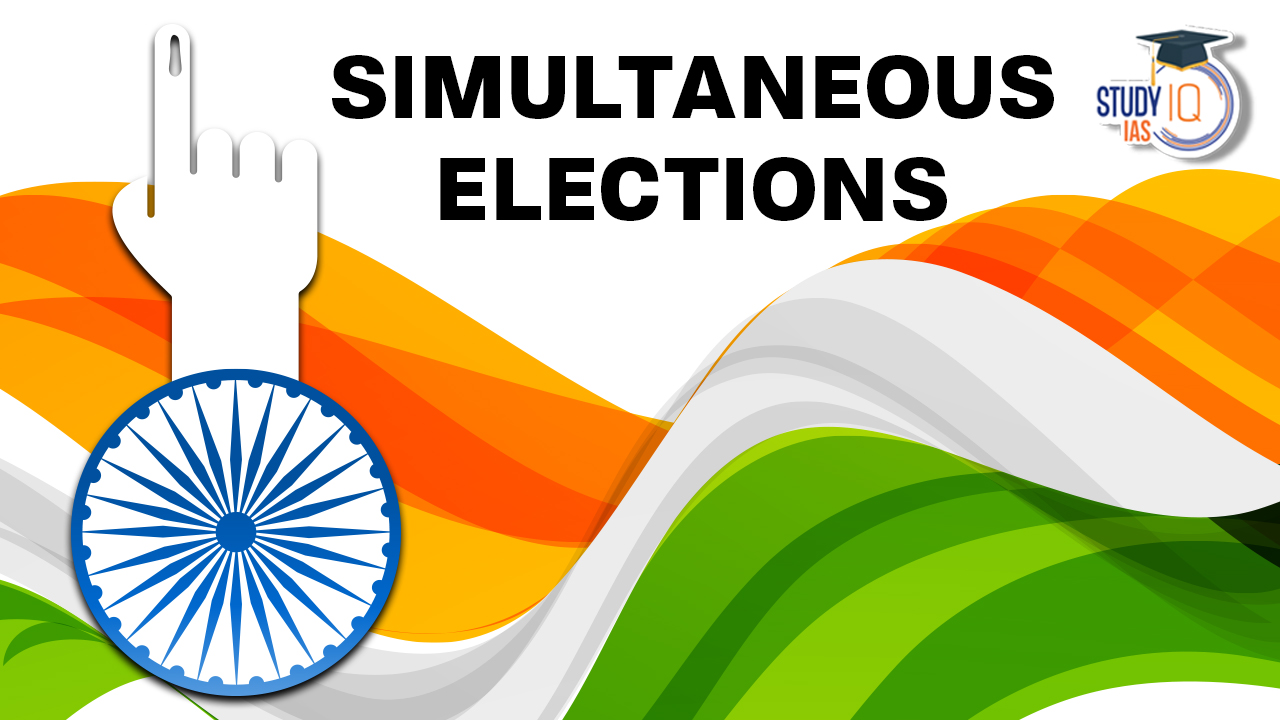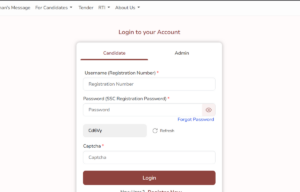Table of Contents
Context: The Union government formed a committee under the chairmanship of former President of India Ram Nath Kovind, to look into the feasibility of simultaneous elections to State Assemblies and the Lok Sabha.
What are Simultaneous Elections?
- Simultaneous elections, also known as synchronized elections or one-nation-one-election, refer to the practice of holding multiple elections for various levels of government (such as national, state, and local elections) at the same time or on a synchronized schedule.
- It will involve the restructuring of the Indian election cycle in a manner that elections to the states and the centre synchronise.
- This would mean that the voters will cast their vote for electing members of the LS and the state assemblies on a single day, at the same time (or in a phased manner as the case may be).
History of Simultaneous Elections in India
- The concept of simultaneous elections is not new to the country.
- Post adoption of the Constitution of India, the First General Elections to the Lok Sabha (House of the People) and all Vidhan Sabhas (State Legislative Assemblies) were held simultaneously in 1951-52.
- This practice continued in three subsequent General Elections held in the years 1957, 1962 and 1967.
- However, due to premature dissolution of some State Legislative Assemblies in 1968 and 1969, the cycle of synchronized elections got disrupted. In 1970, the Lok Sabha itself was dissolved prematurely and fresh elections were held in 1971.
- Thus, since 1967 elections, the practice of simultaneous elections to the Lok Sabha and the Vidhan Sabhas could not be maintained and the elections have still not been realigned.
Arguments for and against Simultaneous Elections
| Arguments in Favour | Arguments Against |
|
|
Views of Reports in favour of Simultaneous Elections
- First Annual Report of the Election Commission of India, 1983: The report recommended holding simultaneous elections for the House of the People and the Legislative Assemblies of States, for the following significant reasons:
- Cost Savings: Simultaneous elections would result in considerable savings by avoiding redundant administrative expenses incurred in separate elections.
- Efficient Voter Roll Updates: Conducting electoral roll revisions simultaneously would lead to substantial cost savings and increased efficiency.
- Minimizing Disruption: Simultaneous elections would reduce the disruption caused by deploying a massive number of civilian and police personnel for extended periods during elections.
- Enhancing Governance: The simultaneous election approach would help maintain a more stable administrative setup, preventing the sidelining of normal government functions and developmental work during election periods, ultimately benefiting the common citizen.
- The Law Commission of India in its 170th Report (1999) also recommended in favour of simultaneous election.
- In 2015, the Parliamentary Standing Committee on Personnel, Public Grievances, Law and Justice in its 79th Report suggested holding simultaneous elections for the long-term good governance.
- In January 2017, NITI Aayog prepared a working paper titled “Analysis of Simultaneous elections: The What, Why and How” in which it worked out a framework for the conduct of simultaneous elections.
Amendments Required in case of Simultaneous Elections
- The policy of simultaneous elections is not possible in the current framework of the constitution, so we require some essential amendments in the constitution to implement this policy:
- Article 83 of the Constitution: Duration of Houses of the Parliament, we are required to fix the time and the tenure of the house of people.
- Article 85 of the Constitution: Sessions of the Parliament, prorogation and dissolution, there must be some guidelines for the dissolution of session; it must not be done on vague and ambiguous reasons.
- Article 172 of the Constitution: Duration of the state legislature.
- Article 174 of the Constitution: Sessions of the Parliament, prorogation, and dissolution.
International Perspective on Simultaneous Elections
| South Africa |
|
| Sweden |
|
| Belgium |
|
Way Forward
- Conducting election in two phases: Parliamentary Standing Committee suggested that simultaneous elections be considered in two-phases.
- Phase I is suggested to be in sync with that of the Lok Sabha elections.
- Phase II is suggested approximately mid-way in the term of the Lok Sabha.
- Thus, it is envisaged to conduct elections every 2.5 years (30 months) in the country once the entire electoral cycles of Lok Sabha and all State Assemblies are synchronized
- Avoiding premature dissolution: Election commission has made following recommendations:
- In case of Lok Sabha: Any ‘no-confidence motion’ moved should also necessarily include a further ‘confidence motion’ in favour of a government to be headed by a named individual as the future Prime Minister.
- In spite of the above arrangement, if there is a situation where dissolution of Lok Sabha cannot be avoided, then the following options can be considered:
- If the remainder of the term of the Lok Sabha is not long (period to be specified), there could be a provision for the President to carry out the administration of the country, on the aid and advice of his Council of Ministers to be appointed by him till, the time the next House is constituted at the prescribed time.
- If the remainder of the term is long (period to be specified), then fresh election may be held and the term of the House in such case should be for the rest of what would have been the original term.
- In the case of Legislative Assembly: In the event of a ‘no-confidence motion’, it should be mandatory to simultaneously move a ‘confidence motion’ for formation of an alternative government. This will, in normal course, eliminate cases of premature dissolution of Assemblies.
- If for any unavoidable reason, any existing Legislative Assembly has to be dissolved prematurely, there should be a provision for the Governor to carry out the administration of the State, on the aid and advice of his Council of Ministers to be appointed by him, or for the imposition of the President’s Rule, till period of expiry of term.
- Schedule of Bye-elections: The Parliamentary Standing Committee recommended that bye-elections to all seats that become vacant during a year may be conducted together during a pre-determined time period.
- Law Commission recommendations: It had suggested that elections of legislative assemblies whose term ends six months after the general elections to Lok Sabha can be clubbed together. However, the results of such elections can be declared at the end of the assembly’s tenure.
- NITI Aayog model on how simultaneous elections can be implemented:


 Daily Quiz 05 July 2025
Daily Quiz 05 July 2025
 SSC MTS Apply Online for 1075 Posts – ...
SSC MTS Apply Online for 1075 Posts – ...
 Dynamic Pricing: What It Is and Why It's...
Dynamic Pricing: What It Is and Why It's...





















